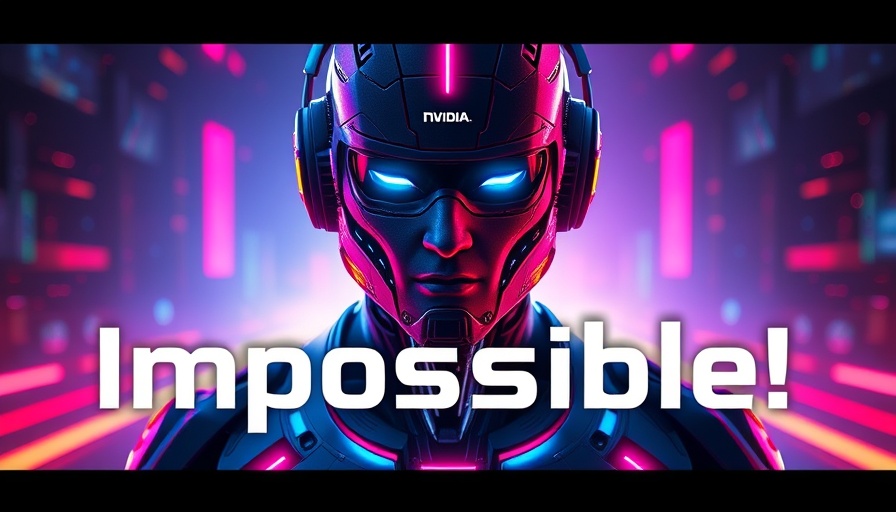
Exploring NVIDIA's GENMO: The Future of Motion Animation
The world of animation is witnessing a revolutionary change thanks to NVIDIA's latest innovation, known as GENMO. This cutting-edge AI technology makes it possible for anyone—from budding animators to seasoned professionals—to create stunning animations with remarkable ease. By transforming recorded video inputs into accurate 3D motion, GENMO opens fresh avenues for game developers, filmmakers, and educators alike.
In NVIDIA’s New AI: Impossible Video Game Animations!, the discussion dives into groundbreaking animation technology, exploring key insights that sparked deeper analysis on our end.
A Look at How GENMO Transforms Animation
At its core, GENMO isn't just another AI tool; it combines the power of AI with practical usability. Traditionally, the animation process involves lengthy hours of meticulous planning and execution, often requiring specialized skills. However, with GENMO, animators can simply start with a video of themselves. The AI analyzes the 2D visuals and translates that into dynamic movements for virtual characters. Whether it's strolling along a path or executing complicated dance moves, GENMO demonstrates impressive adaptability. Imagine capturing everyday actions and seeing them come to life in a gaming environment—this is the future!
How Does It Work?
One of the most exciting features of GENMO is its capacity to learn from various forms of input. You can simply record a video where you demonstrate a movement, and not only can it recreate that action, but you can also ask it to modify movements just by using voice commands. For instance, if you want a character to perform a lunge while jogging, a simple prompt will allow GENMO to pull this off seamlessly, bridging the gap between concept and execution.
The Challenge of Synthesis: Weaving Movements Together
What truly sets GENMO apart is its ability to blend different types of movements and prompts. As the AI works, it connects various actions to create a cohesive animation that flows from one movement to the next. This level of sophistication means that it respects the style of the movements originally captured, making transformations appear effortless. The creators behind this technology have ingeniously programmed GENMO to account for breakpoints in animations, ensuring fluid transitions that feel natural and engaging.
The Future of Dance and Animation
A particularly fascinating aspect of GENMO is its application in the world of dance. Traditional motion capture technology often relies heavily on specialized equipment and expertise. However, with GENMO, even a casual user can input dance moves drawn from real-life examples and watch in awe as the AI replicates the rhythms and styles of professional dancers. This possibility not only democratizes the art of animation but also encourages broader participation in creative pursuits.
Limitations and Considerations Ahead
While GENMO showcases tremendous potential, it's essential to recognize its limitations. Currently, it operates with full-body motion but lacks the functionality to depict facial expressions and hand gestures accurately. Furthermore, high-quality animations require multiple processing steps, which might delay real-time applications. As it stands, users can experience a lag, and improvements are still on the horizon.
A Step Toward an Inclusive Future in Animation
No discussion about GENMO would be complete without acknowledging its broader implications in education and business. For instance, educators can utilize this technology to engage students in creative storytelling while allowing them to amplify their learning through interactive methods. Likewise, entrepreneurs in gaming and digital content can leverage GENMO to create visually stunning presentations without extensive capital or resources. This reduces the entry barrier to high-quality animation and storytelling.
In summary, NVIDIA's GENMO marks a pivotal moment in the evolution of motion animation. With its user-friendly interface and powerful capabilities, it encourages creativity, collaboration, and shared experiences in technology. As we move forward, embracing such innovations will not only enrich the artistic landscape but also empower us to express ourselves like never before.
Don’t miss out on the revolutionary opportunities that GENMO brings. Start experimenting with this AI today and unleash your creativity for real-time animations!
 Add Row
Add Row  Add
Add 




Write A Comment